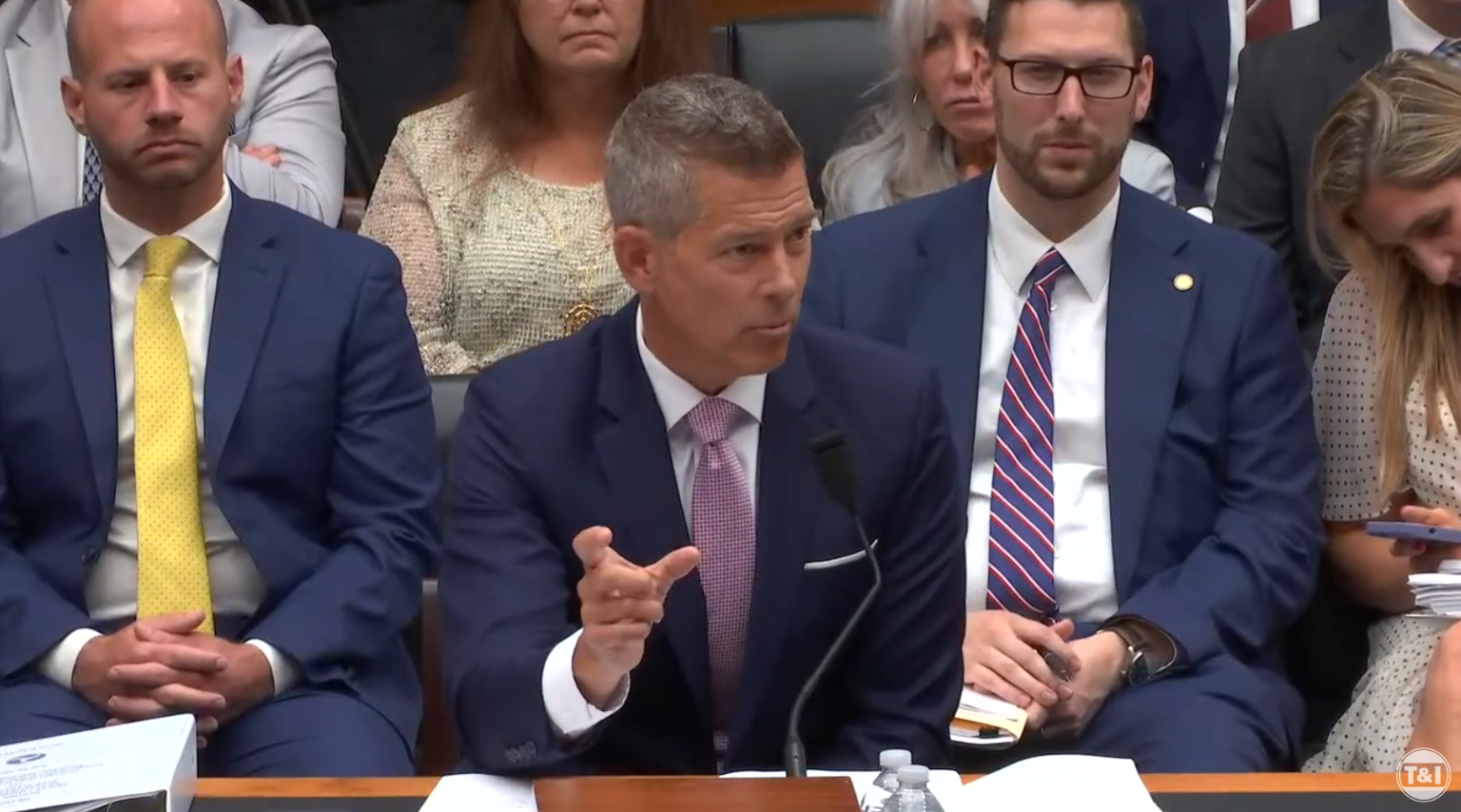Key Takeaways from a High-Traffic Day on the Hill
The Senate Committee on Environment and Public Works and the House Committee on Transportation and Infrastructure met simultaneously on Wednesday morning to discuss surface transportation reauthorization and USDOT budget requests. If you missed one or both, we are here with the highlights.
House Committee on Transportation and Infrastructure
USDOT Secretary Sean Duffy testified before House T&I, continuing to emphasize a similar set of priorities we’ve heard since he was sworn in – eliminating red tape, clearing the backlog of infrastructure projects from the prior administration, and overhauling air traffic control systems and airport infrastructure to increase safety.
Secretary Duffy told the Committee that USDOT will broadly prioritize innovation and efficiency to get projects moving and completed. More specifically, he listed USDOT’s top budget requests as:
Air traffic control;
Roads and bridges;
Drones and autonomous vehicles; and
Rebuilding U.S. shipyards and strengthening mariner and shipyard worker recruitment, training, and retention.
“This Committee has already begun its critical work on surface transportation reauthorization. The American people deserve the reliability of America’s surface transportation network with impactful investments towards safety, efficiency, and innovation. The President is a builder. Together we can build big and beautiful and realize a golden age of transportation,” Duffy said.
Senate Committee on Environment and Public Works
At the same time, Senate EPW welcomed North Dakota Gov. Kelly Armstrong, Phoenix Mayor Kate Gallego, and Austin Ramirez, CEO of Husco International and member of the National Association of Manufacturers, to offer stakeholder perspectives on infrastructure challenges and the impact of federal investment as part of its ongoing hearings around surface transportation reauthorization.
In his remarks, Mr. Ramirez spoke about how sustained and predictable infrastructure investment allows manufacturers like Husco to compete and provides supply chain dependability as they move goods across roads, bridges, and ports. “Investments in infrastructure are investments in manufacturing.”
He also outlined manufacturers’ top infrastructure bill priorities:
Continuing robust investment levels for federal infrastructure and developing long-term solutions for Highway Trust Fund solvency;
Strengthening transportation supply chains; and
Reforming burdensome permitting laws and regulations to ensure federal infrastructure investments are made efficiently and responsibly.
“It is no surprise that in a 2024 survey of manufacturers, 72% of respondents said that the length and complexity of the permitting process affected their investment decisions,” Mr. Ramirez told the Committee. “Permitting delays, complicated bureaucracy, and litigation make it difficult to complete infrastructure projects that benefit communities across the country.”
Gov. Armstrong also highlighted permitting reform as a top priority. “Robust funding is important, but all the money in the world means nothing if it can’t be deployed because of a broken permitting system. Our current regulatory framework imposes excessive delays and escalating costs and injects uncertainty into critical infrastructure projects. It also discourages private sector investment, while making federal investment less effective and efficient.”
Meanwhile, Mayor Gallego repeatedly emphasized the need to prioritize resiliency and safety, including for construction and skilled trades workers completing infrastructure projects in Phoenix’s extreme heat conditions. She called for Congress to fund state and local government at or above the funding levels in the Infrastructure Investment and Jobs Act and to continue support for the Safe Streets and Roads for All (SS4A) Grant and PROTECT (Promoting Resilient Operations for Transformative, Efficient, and Cost-saving Transportation) programs that allow cities to effectively prioritize high-risk corridors and vulnerable infrastructure.
“We have to make sure they are structured so safety is what we prioritize the most,” Mayor Gallego said, adding: “The way we built in 1925 is not the way we would do it today. We did not have the challenge of 31 straight days above 110, so we want the flexibility to use pavement and construction techniques that make sense for our climate.”
Gov. Armstrong similarly noted the importance of safety and flexibility with funding requirements given North Dakota own extreme weather challenges. Delivering transit and infrastructure services is difficult in rural areas and exponentially so when there are strong winds and four feet of snow on the ground, he said.
"You have a bad winter and a late thaw, and all the sudden, I have a county problem or a DOT problem that nobody knew about until May 1. And if you are really restricted in how you utilize the money that is available to you, you are legitimately fixing things that would go 25 spots down the priority area because you are not allow to use the money for the one that should be number one."
In May, during Infrastructure Week, United for Infrastructure and our many partners across the country made the case for the essential role federal transportation and infrastructure investments have to accelerate America’s economic competitiveness, make our country more resilient, and ensure our national security. Wednesday’s House and Senate hearings reinforced those principles. UFI is grateful to each of the four public and private sector leaders who spoke eloquently on infrastructure's importance as Capitol Hill turns its focus toward surface transportation reauthorization.
In the months ahead, as headlines emerge and fade, United for Infrastructure, our Steering Committee and Partnership Network colleagues, along with the hundreds of infrastructure stakeholder organizations around the country, will not lose sight of the objective at hand – ensuring a stronger infrastructure future.




